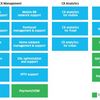Greg Owens, Director, Customer Experience Solutions Marketing, Alcatel-Lucent
Customers have growing expectations for mobile broadband services. Better networks, broader device support, ubiquitous connectivity and competitive prices remain essential, but they’re no longer enough to keep customers coming back for more. Today’s mobile customers demand a superior customer experience, one that focuses on making it easy to discover, use and enjoy applications, devices and services.
Service providers are feeling the pressure to deliver on these expectations.
A renewed focus on QoE
Rising smartphone use is thrusting quality of experience (QoE) back into the spotlight. Smartphones appeal to users because they promise easy access to e-mail, apps, social networking and video. But smartphones have hidden complexities. Many users struggle with smartphone setup, app configuration, usage tracking and connectivity.
The end result is that smartphone users are turning to service providers more often — with problems that take more time to resolve.
Research by Alcatel-Lucent and WDS highlights the challenges associated with smartphone support:
- Average handle time is currently 15 minutes for smartphone issues — 28% more than for feature phone issues.
- A full 30% of smartphone problems even take more than a day to resolve.
- Follow-up calls are frequent as well: 43% of smartphone problems require two or more interactions with the help desk.
This isn’t what customers expect when they sign their smartphone contracts.
Avoiding aggravation at the help desk
Service provider help desks should be reliable sources of quick answers and effective solutions. Great help desk experiences can enhance QoE and strengthen customer–provider relations. But despite providers’ efforts, the help desk often remains a source of aggravation for many (smartphone) users.
The main problem is that help desk agents aren’t always equipped to deliver fast, reliable solutions. Many lack easy access to timely intelligence about devices, applications, services and networks. They hunt for solutions manually — often across dozens of systems — or escalate issues to higher-tier support. For customers, the end effects are long wait times, frequent transfers and repeat calls.
What customers expect from support
So what kind of support do (smartphone) customers expect from service providers? The answers are straightforward:
- They want quick and effective solutions that let them enjoy their devices and services.
- They want to feel confident that their providers understand their unique problems, interests and needs.
- Above all, they want to feel like they’re always in control of the customer experience.
- The best support keeps customers connected to — and in control of — their devices, services, applications and content. From a customer perspective an ideal support offer includes:
- Personalized support that solves problems quickly and simplifies service and app configuration
- Access to the same QoE through every support channel —phone, chat, self-care, on-device help apps and social networking
- Proactive support that fixes problems before they become apparent
Knowledge helps service providers deliver
Service providers have in-depth knowledge of customers, devices, services and networks. This puts them in an ideal position to deliver the enhanced support and simple experiences customers want. The challenge is to make this knowledge available to the right stakeholders and systems at every point of customer interaction.
Systems that deliver the right tools, information and visibility to the right places at the right times can dramatically improve the customer experience. With support backed by data-driven insights, customers can:
Engage with agents who know what services, devices and apps they use, and who can identify problems, solutions and new opportunities in real time. This cuts handling time and gets customers back on track faster.
Get support on all services from one well-informed source. This reduces escalations and transfers, and saves customers the trouble of explaining their concerns to agents who can’t actually address them.
Access automated configuration capabilities or apps that instantly connect them with the help desk using their channel of choice. This can eliminate complex configuration issues and allow customers to get support at their convenience.
All of these things can inspire customer satisfaction. Customers can feel confident that they can solve problems on their own or get help from someone who understands what they’re experiencing. The end results are fewer and shorter help desk calls, less frustration and more time for enjoyment and discovery.
Beyond the help desk
The relevance of data doesn’t stop at the help desk. With effective data mining and analysis, service providers can use their knowledge of customers to enhance and optimize many aspects of the customer experience.
For example, providers can apply their knowledge of customer usage data to present customers with valuable incentives — like unlimited mobile video downloads in off-peak hours at no additional cost — delivering more value for money. They can draw on similar knowledge to empower the help desk to extend compelling targeted offers. Or, they can use it to confirm that customers are getting the best possible value from their mobile packages.
Service providers can combine customer, network and usage insights to take a more proactive and positive approach to bandwidth management. For instance, to offset unpopular bandwidth and usage caps, providers can give customers compelling real-time opportunities to try different consumption patterns. These could include dynamic data pricing or free streaming of content sponsored by content providers.
Data-driven insights can also influence customer experience in more subtle ways, such as preventing bill shock. With the right insights, service providers can watch for abnormally high usage or billing charges in special conditions such as international roaming. They can then trigger alerts to offer transparency and choices that prevent undesirable surprises.
Getting “motivated” about customer experience
Alcatel-Lucent’s recently launched portfolio of Motive Customer Experience Solutions (CSX) addresses the concerns outlined above. The CXS portfolio helps service providers forge stronger and more valuable customer relationships and foster long-lasting brand loyalty by building customer-focused improvements into their products and services.









